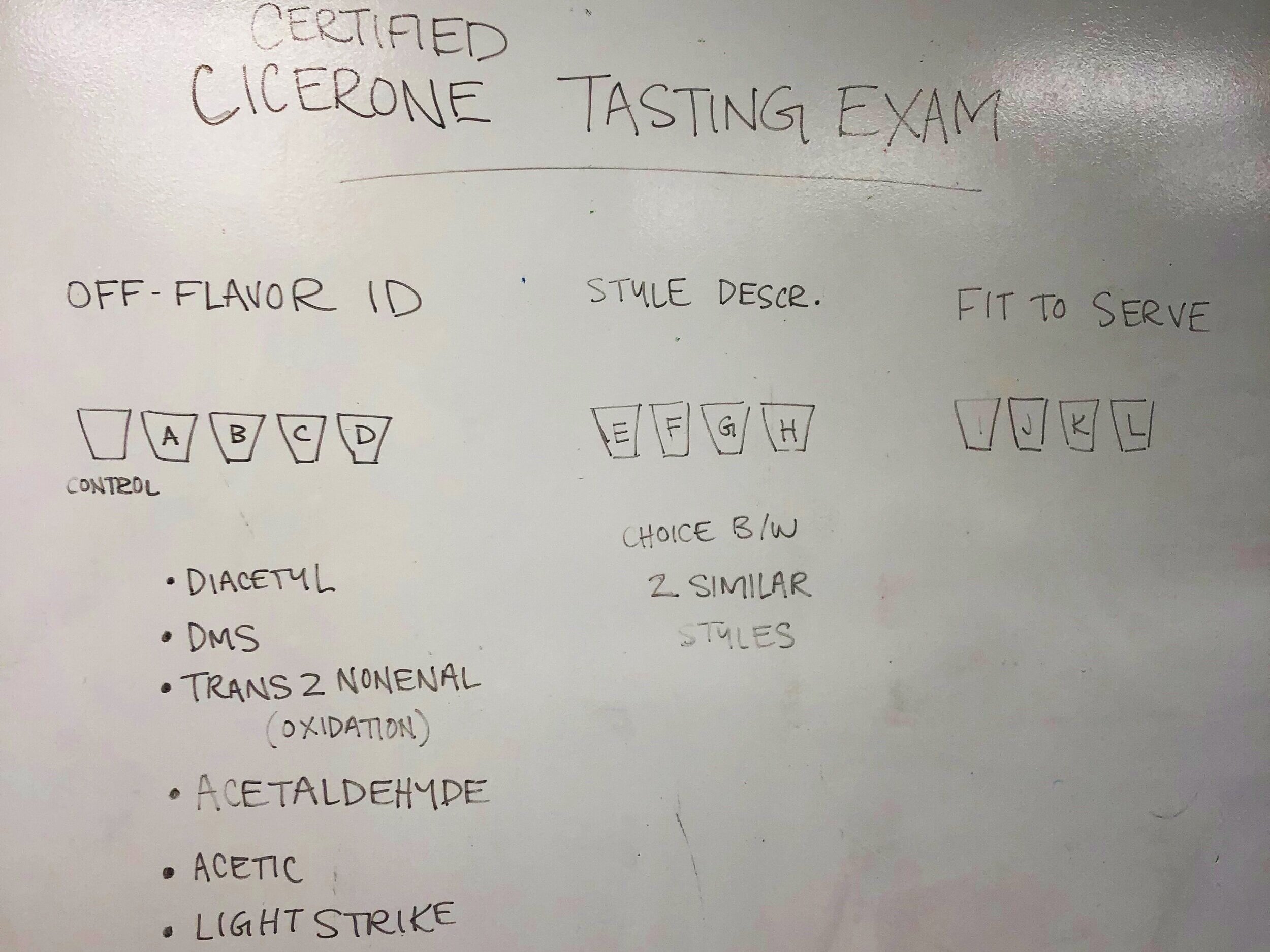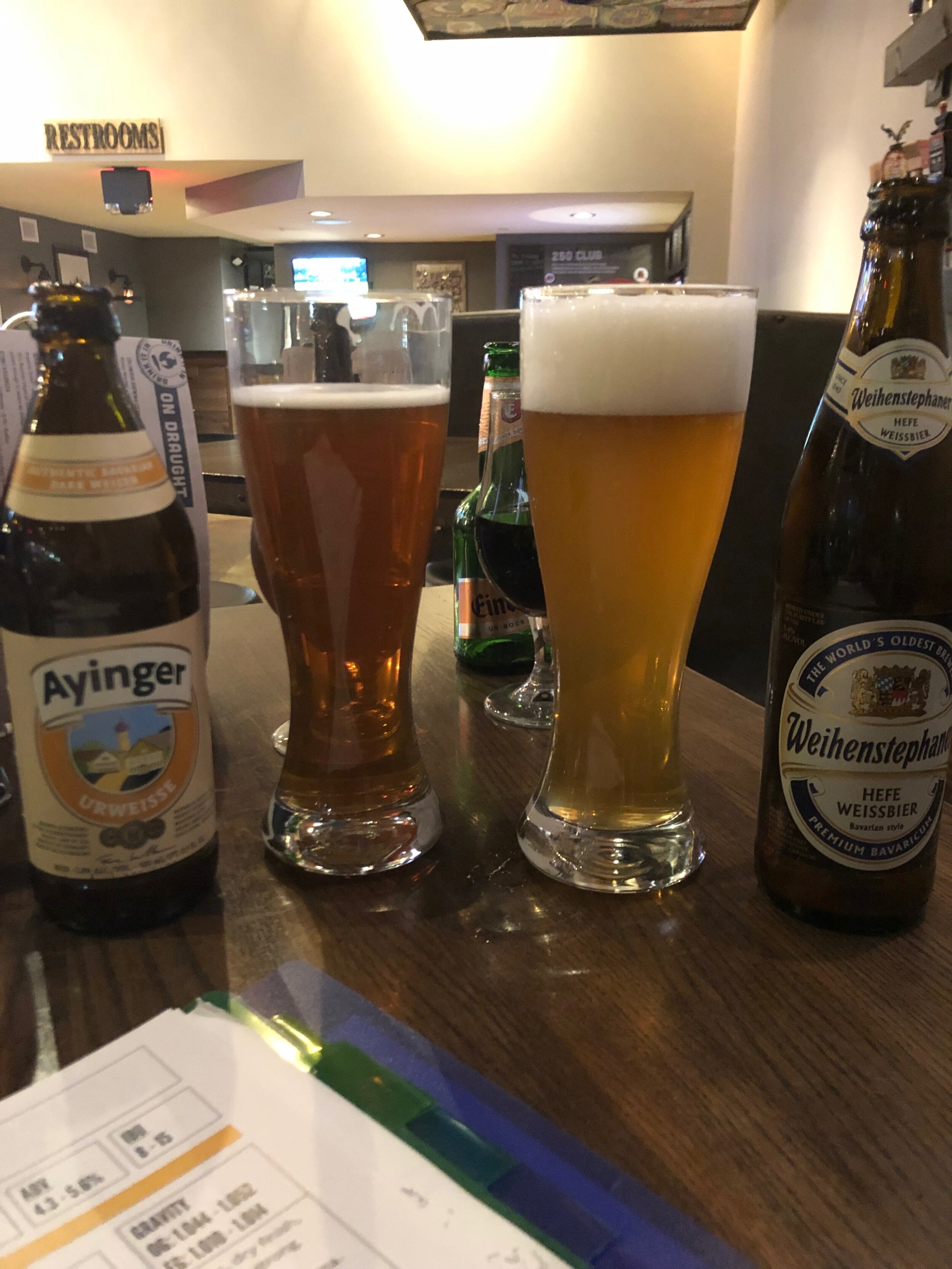Tips on Taking the Tasting Portion of the Certified Cicerone Exam
When I retook the tasting portion of the exam, my palate was much better prepared. However, I was smarter about the way that I approached the test itself, too. The most helpful approaches to actually retaking the test were:
Smelling every sample ASAP
Tasting the style samples (F through I) before I even turned the exam over
Answering “control” twice, because I’m taste-blind to acetaldehyde
Miss you, Kayla!
1. Smell Samples ASAP
Some of your off-flavors are going to be pretty volatile. So smell samples as soon as your proctor allows it. My nose gets diacetyl from a mile away, so I knew that off-flavor as soon as I picked it up, before my nose got anywhere near that glass, before I even got back to my exam seat. But when the timer starts and you’re allowed to officially swirl-and-sniff, give everything a good sniff before you taste anything. You’ll knock a couple of those 13 cups off the list before anything even touches your palate.
First test: 2/6 off-flavors
Second test: 5/6 off-flavors
2. Taste the Style Samples (E-H) Before You So Much As Glance at the Exam
Hands down, the most effective thing I did when I retook the tasting portion was to taste the style samples blind. When you turn the test over, you’ll see two options for each sample. Is it a dubble or a doppelbock? Munich Helles or a Czech Premium Pale? ESB or an American Amber?
Those options will get in your head, man. Don’t let them in there until you’re absolutely ready.
Before you turn the test over, taste the style samples (these will be letters F through I). Take a stab at guessing the style. The first time I took the exam, I identified three styles correctly at first but changed my answers and ultimately identified ZERO styles correctly. Go with your gut, peeps.
On my retake, I guessed two styles correctly before I even saw the two options. Done and done. The other two, I didn’t identify exactly correctly, but my initial guesses helped me discern between the two available options. These were not my options (again, the first rule of the Cicerone exam is to not talk about the Cicerone exam), but say, for example, that you think a beer is a Belgian Pale Ale. You turn the test over and you’re not right. BUT your options are a tripel or a kolsch. Turns out you nailed the yeast, and you’re gonna go with the tripel, not the kolsch, right? Right.
First test: 0/4 styles
Second test: 4/4 styles
3. You Can Answer “Control” Twice (A-D)
Like I said, I went into the retake knowing that I’m pretty taste blind to acetaldehyde. If Brock and Cooper, my oh-so-helpful friends in the quality lab, would spike acetaldehyde a lot, I could kind of tell that something was off. Not exactly reliable.
The first time I took the tasting portion, I identified diacetyl and DMS, then took a shot at which of the remaining two samples was the control and which was acetaldehyde.
The second time I took the tasting portion, I identified diacetyl and DMS. Then I cut my losses and answered “control” for both of the other two.
As far as I know, you’ll never have two controls in the samples of the first section. My answers were purely strategic. The first time, I mixed up control and acetaldehyde and thus lost both points. The second time, I missed only one, because one of them was the control.
First test: 2/4 brewing off-flavors
Second test: 3/4 brewing off-flavors
Overall:
First test: 3/12
Second test: 11/12
In brief: tasting is absolutely a skill that you can learn, but it doesn’t hurt to be smart about the way you approach the test, either.










